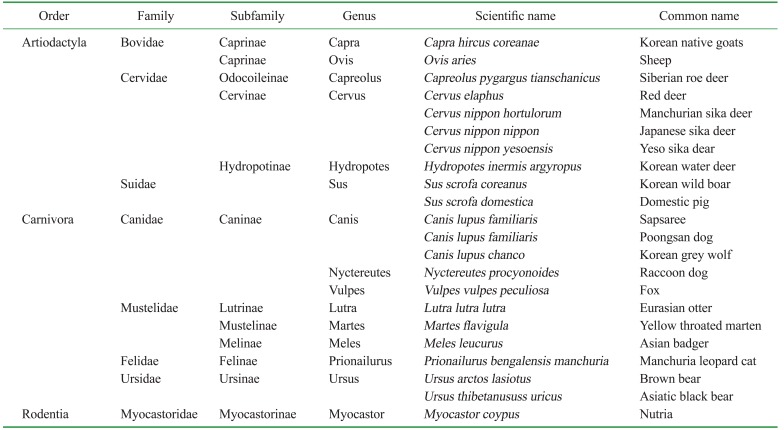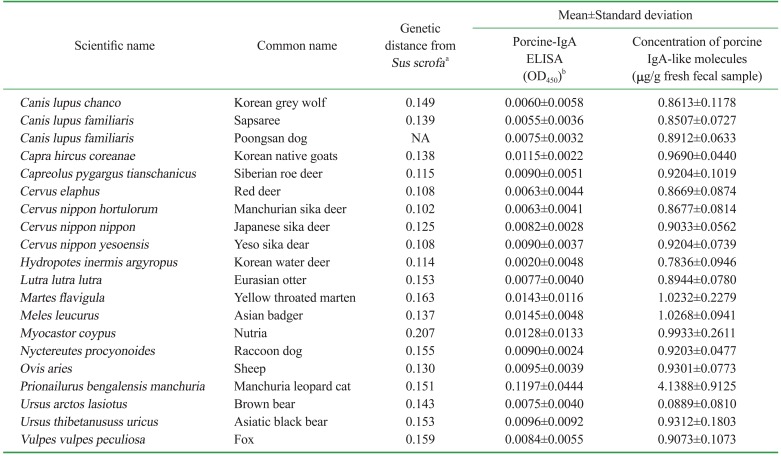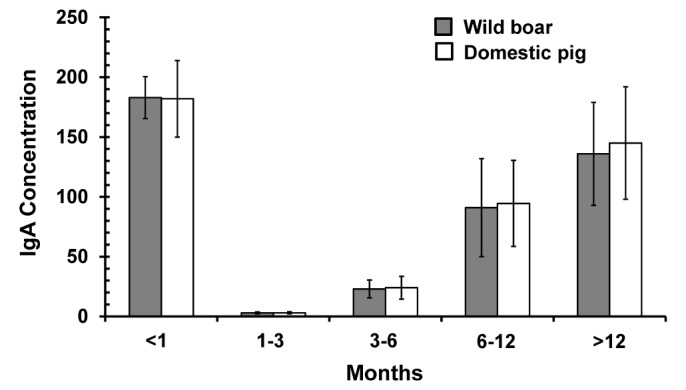Abstract
ACKNOWLEDGEMENTS
References
Table I
Biological classification of the 22 different animals, the fecal samples of which were used in this study

Table 2
Concentration of IgA in different age groups of wild boars and domestic pigs

In the suckling period (<1 month), the fecal IgA concentration peaked, followed by a decrease during the weanling period (1~3 months). The level of IgA began to rise again after the weanling period. No statistically significant differences in OD450 values between wild boars and domestic pigs (p=0.000) of each age group was detected.
Table 3
Cross-reactivity of porcine IgA with immunoglobulin from 20 animal species in Korea

aCytochrome b sequences were downloaded from GenBank under the following accession numbers: Canis lupus chanco (NC_010340), Canis lupus familiaris breed Sapsaree (AY656755), Capra hircus (EU259132), Capreolus pygargus tianschanicus (EF139144), Cervus elaphus (JF489133), Cervus Nippon hortulorum (GU377266), Cervus Nippon Nippon (AB021093), Cervus Nippon yesoensis (AB160860), Hydropotes inermis argyropus (EF139155), Lutra lutra (EF689067), Martes flavigula (EF987749), Meles leucurus (HQ711951), Myocastor coypus (AF422919), Nyctereutes procyonoides (NC_013700), Ovis aries (DQ903227), Prionailurus bengalensis (AB210238), Sus scrofa coreanus (AY692029), Ursus arctos (NC_003427), Ursus thibetanususs uricus (AY522430), Vulpes vulpes (AY928669). NA, Not available.
bTwelve samples were tested from each species. OD450, Optical density at 450 nm.




 PDF
PDF ePub
ePub Citation
Citation Print
Print



 XML Download
XML Download